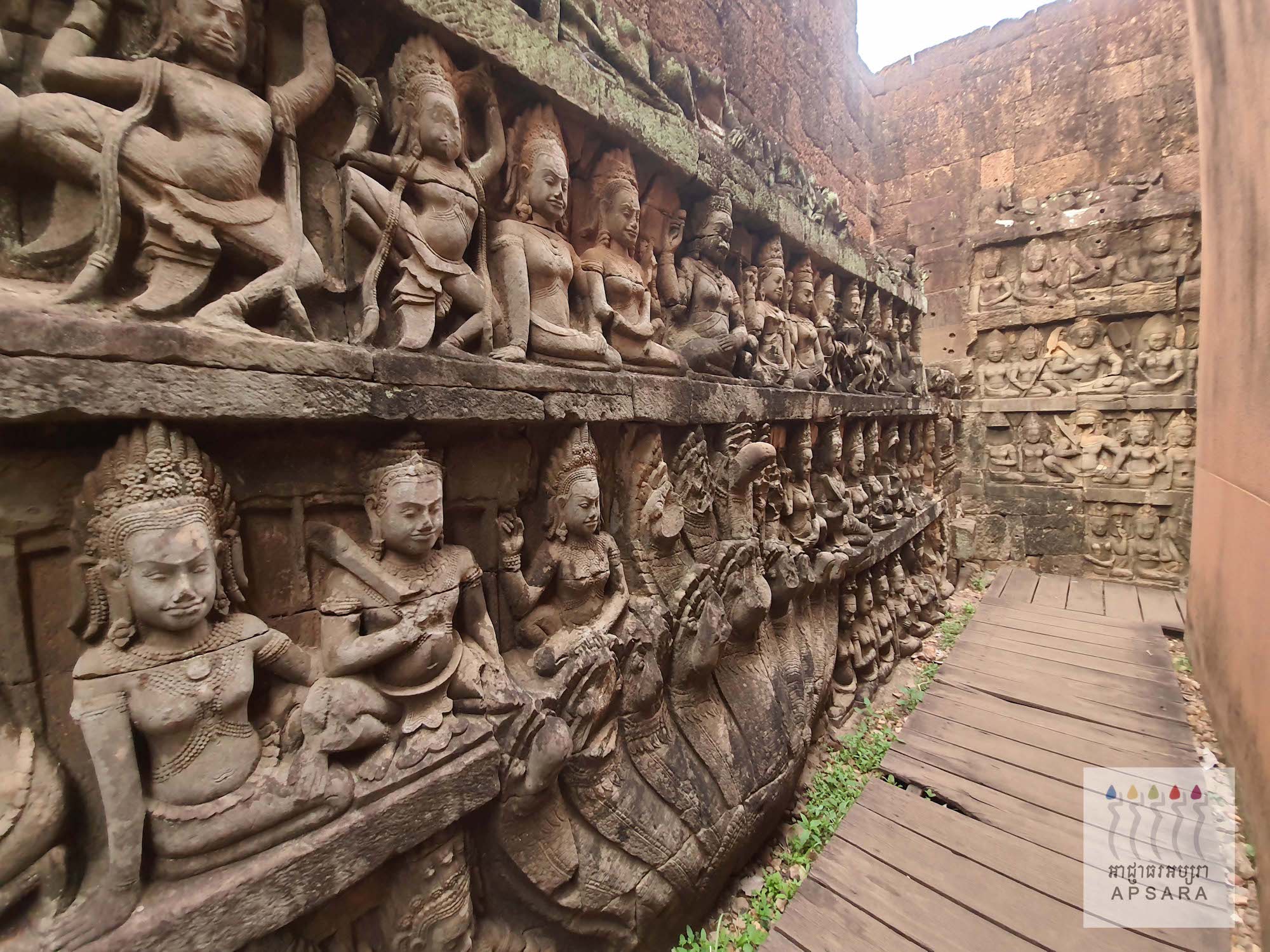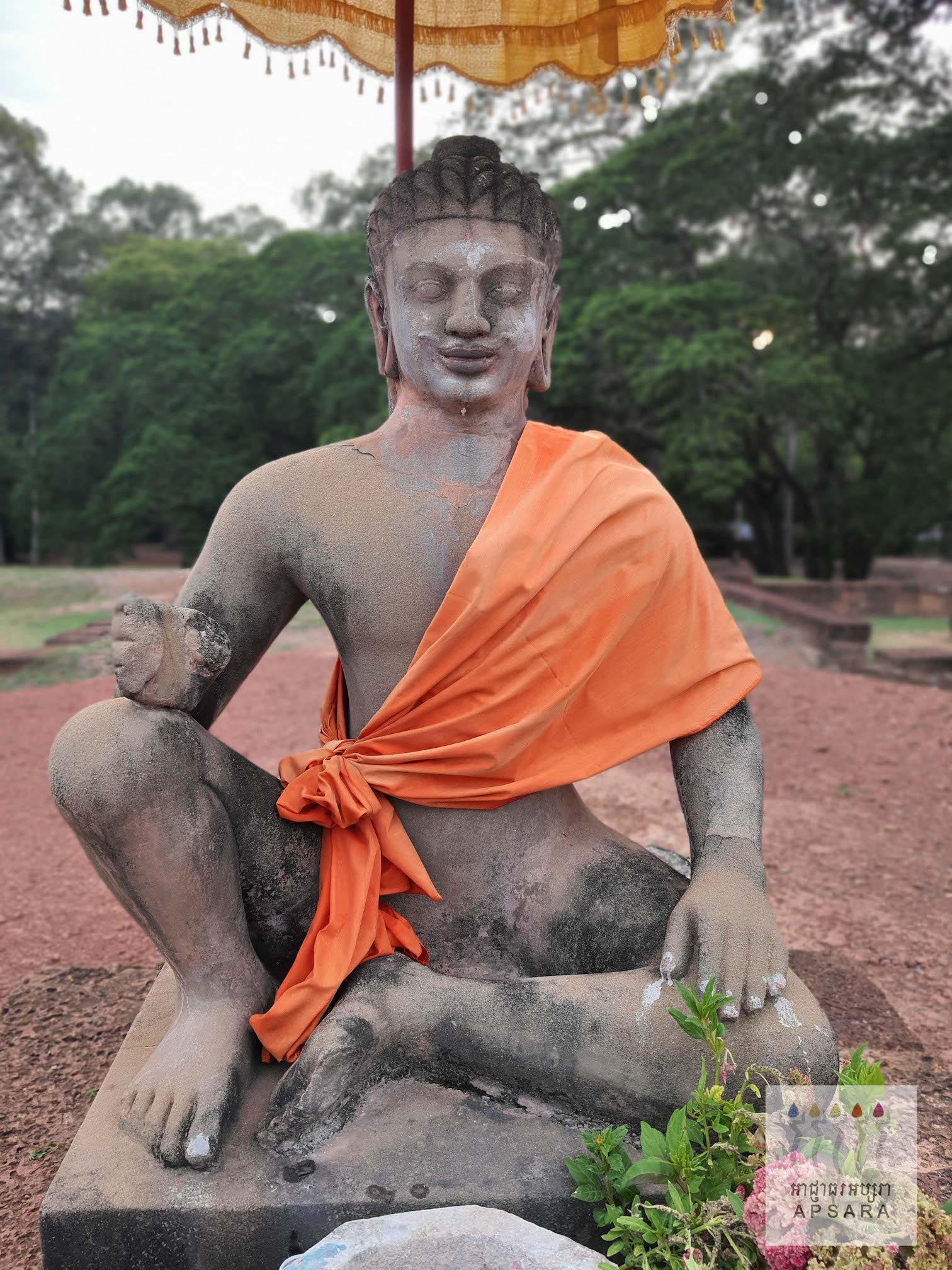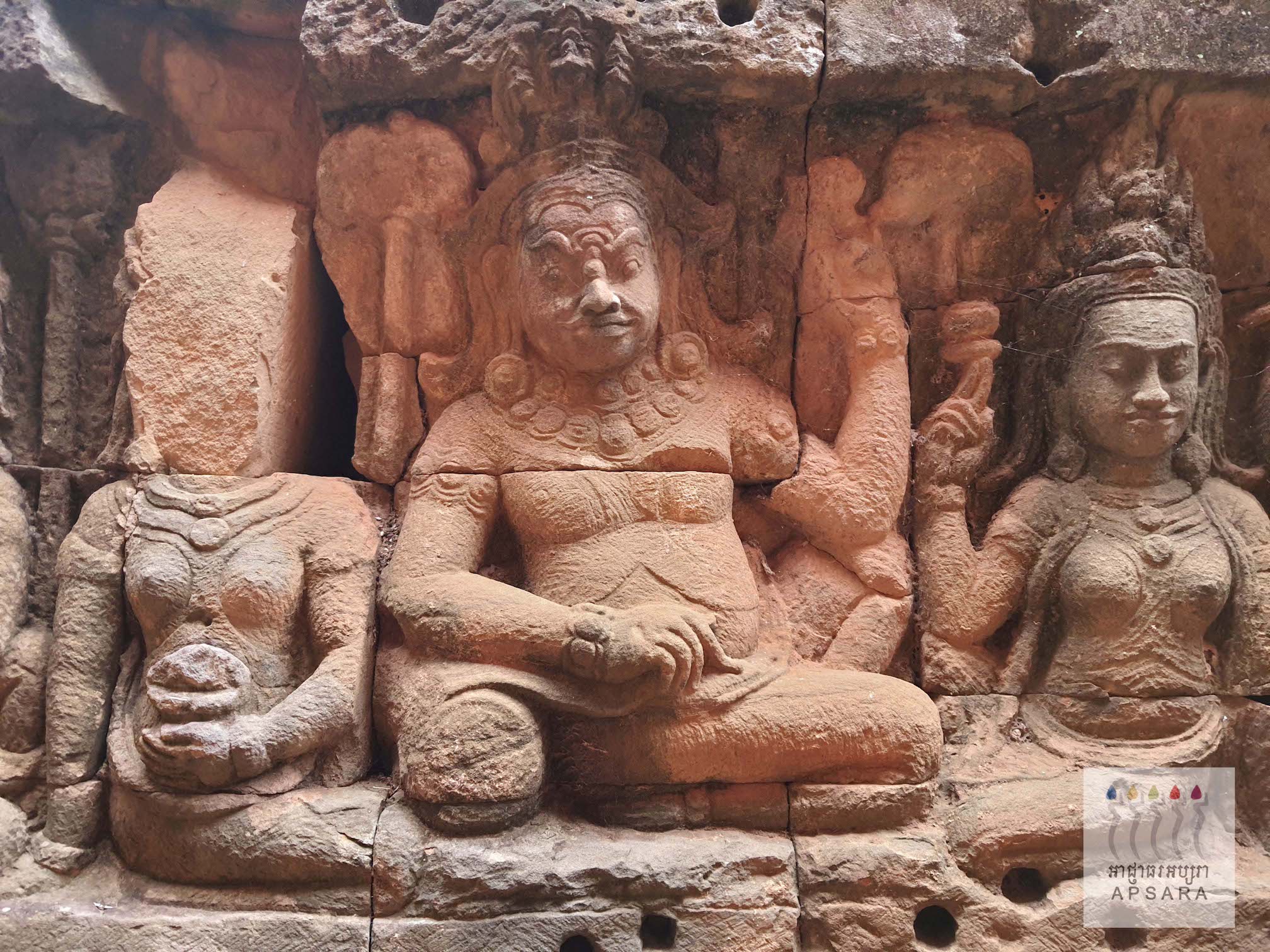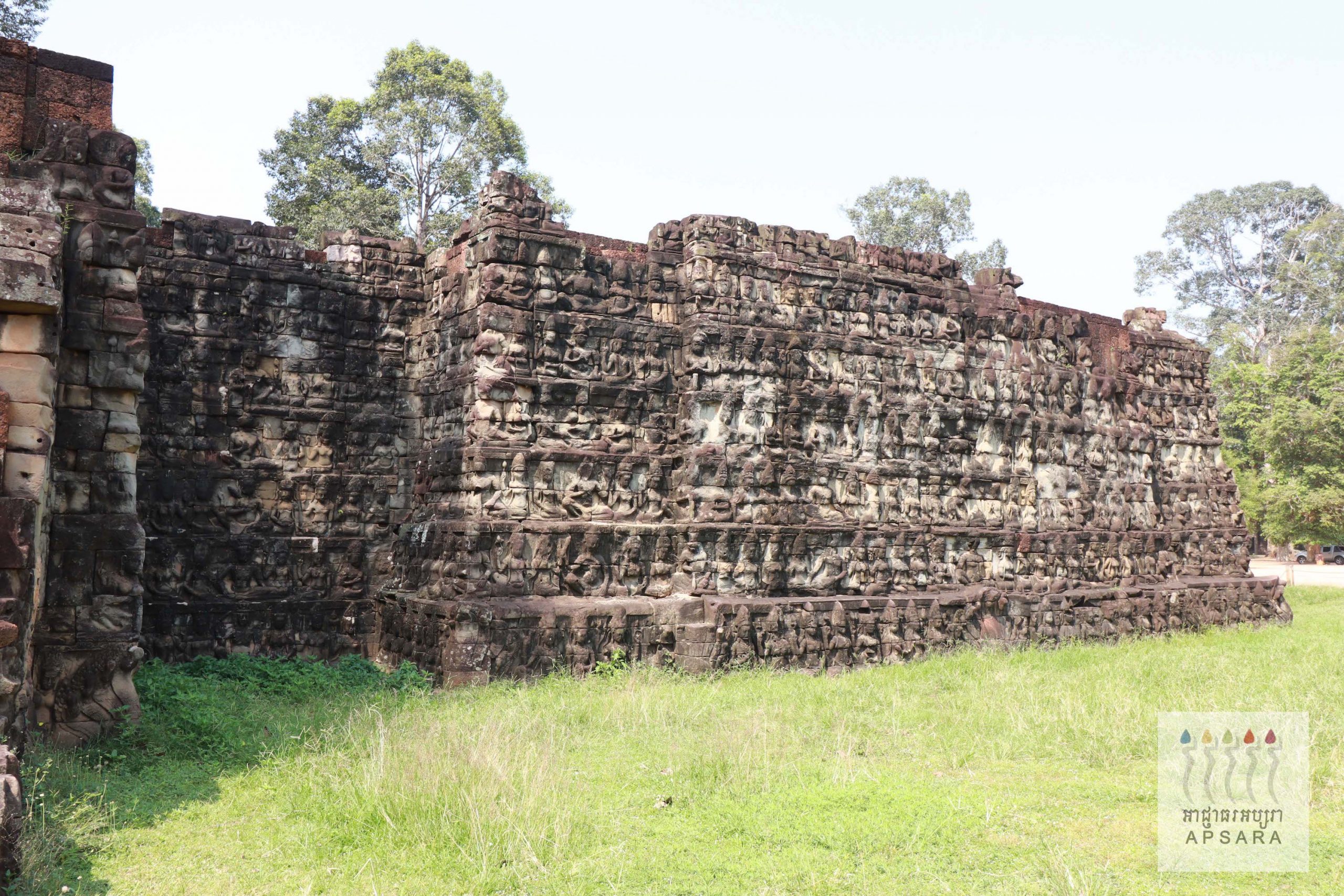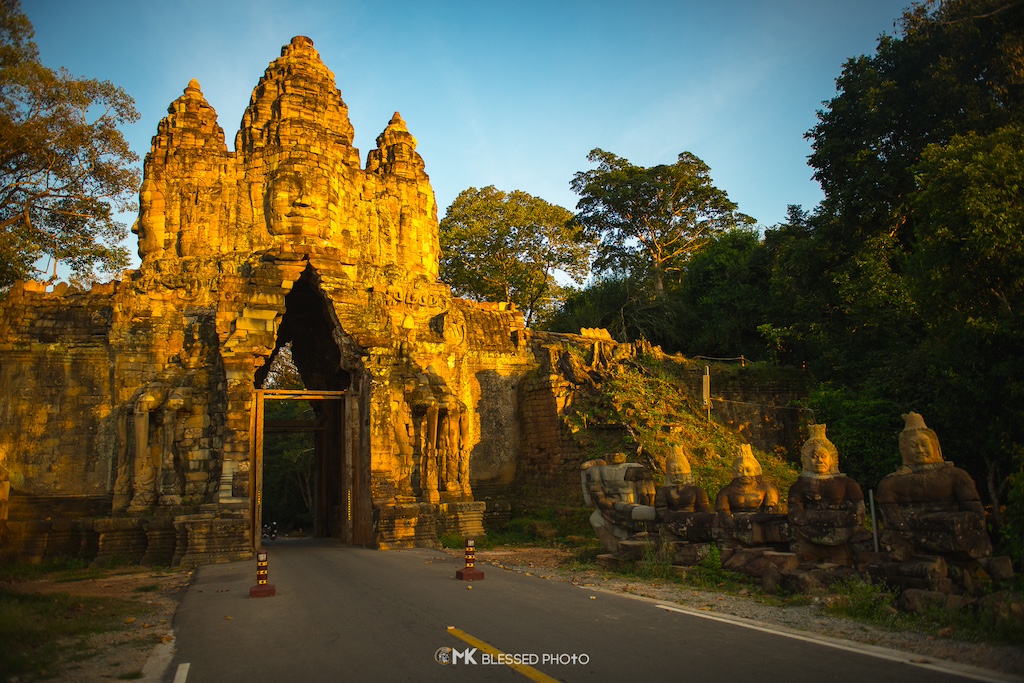(Photos by: Apsara National Authority)
Terrace of the Leper King: Unraveling the Mysteries of Angkor
The Terrace of the Leper King, a fascinating archaeological site within the Angkor Thom complex, is steeped in mystery and historical significance. Located in the northwest corner of the Royal Square of Angkor Thom, this enigmatic terrace is a site of rich artistic and cultural importance.
The terrace gets its intriguing name from a statue found on the site, which was mistakenly thought to depict a king with leprosy. In reality, the statue likely represents Yama, the Hindu god of death, and is symbolic of judgment and power. The original statue now resides in the National Museum in Phnom Penh, while a replica stands in its place.
Built-in the late 12th century during the reign of King Jayavarman VII, the Terrace of the Leper King is a raised platform adorned with intricate carvings and bas-reliefs. The sculptures depict gods, goddesses, mythological beings, and scenes from Hindu and Buddhist lore, showcasing the artistic mastery of the Angkorian period.
One of the most striking features of the terrace is the hidden, inner wall, discovered only recently. This wall is lined with rows of finely detailed carvings, depicting a multitude of celestial beings and mythical creatures. The discovery of this inner wall has added a new layer of intrigue and depth to the understanding of the terrace's purpose and artistic value.
The Terrace of the Leper King, alongside the nearby Terrace of the Elephants, was likely used for public ceremonies and royal processions, playing a significant role in the social and religious life of the Angkorian empire.
Exploring the Terrace of the Leper King offers a unique glimpse into the spiritual and artistic heritage of Cambodia. The intricate carvings and the terrace's historical context provide an insightful window into the past, inviting visitors to ponder the mysteries of this ancient civilization.
Major Sight Spots in the Terrace of the Leper King
Replica of the Leper King Statue: Symbolizing power and judgment.
Intricate Bas-Reliefs: On both the outer and inner walls.
Hidden Inner Wall: With rows of detailed carvings.
Surrounding Courtyards: Part of the Royal Square.
Proximity to the Terrace of the Elephants: Enhancing the historical context.


